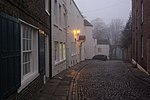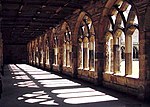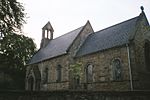Chorister School

The Chorister School was a co-educational independent school for the 3 to 13 age range. It consisted of a Pre-School (opened in September 2008), a pre-preparatory and preparatory day and boarding school in Durham, England. It was set in an enviable position on a World Heritage Site, in a range of Grade I listed buildings adjacent to Durham Cathedral, surrounded by the woodlands and riverbanks of the River Wear. The majority of the pupils at the school attended on a 'day' basis, with about 45 boarders of both sexes making up the balance. Pupils did not have to be Cathedral choristers, but those boys and girls who were choristers could be either boarders or day pupils. Pupils were taught in small classes in a collection of historic buildings all of which formed part of the college, or cathedral close. The Chorister School merged with nearby Durham School, closing 28 September 2021.
Excerpt from the Wikipedia article Chorister School (License: CC BY-SA 3.0, Authors, Images).Chorister School
The College, Durham Viaduct
Geographical coordinates (GPS) Address Phone number Website Nearby Places Show on map
Geographical coordinates (GPS)
| Latitude | Longitude |
|---|---|
| N 54.772096 ° | E -1.577786 ° |
Address
The Chorister School
The College
DH1 3EL Durham, Viaduct
England, United Kingdom
Open on Google Maps










